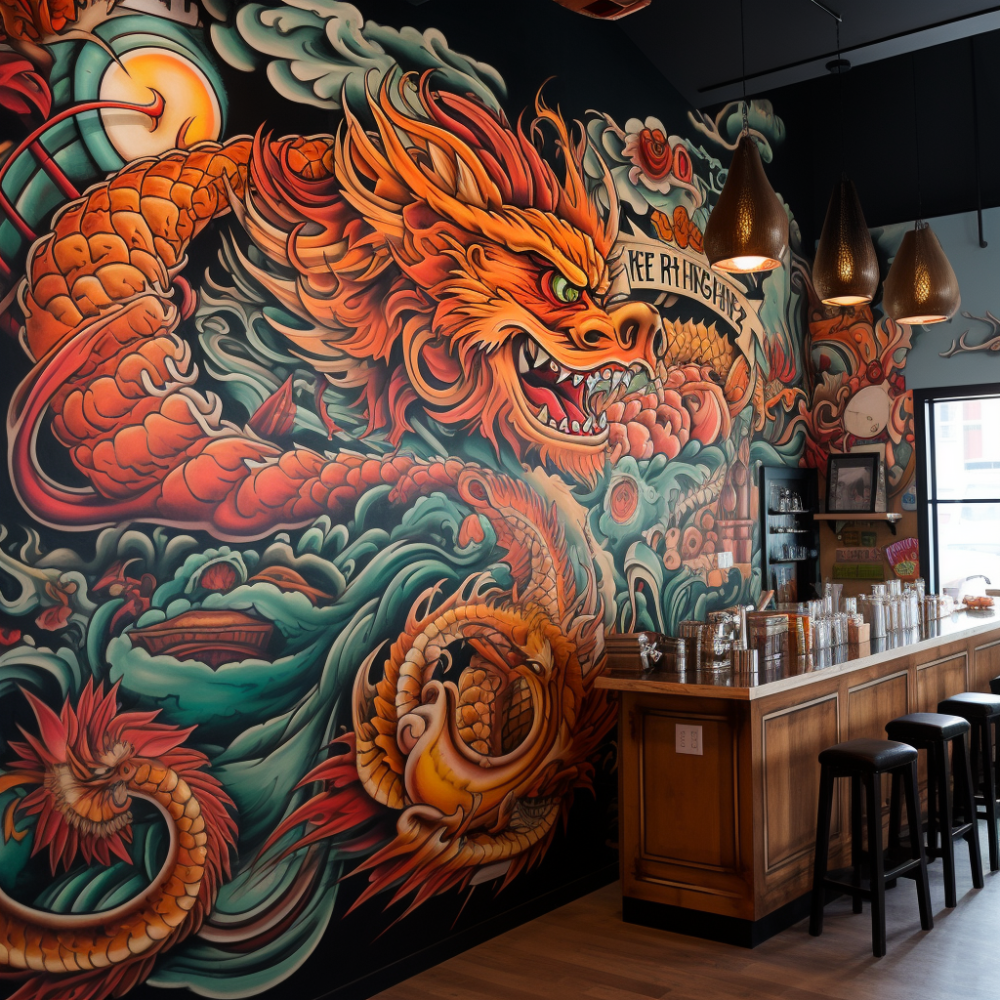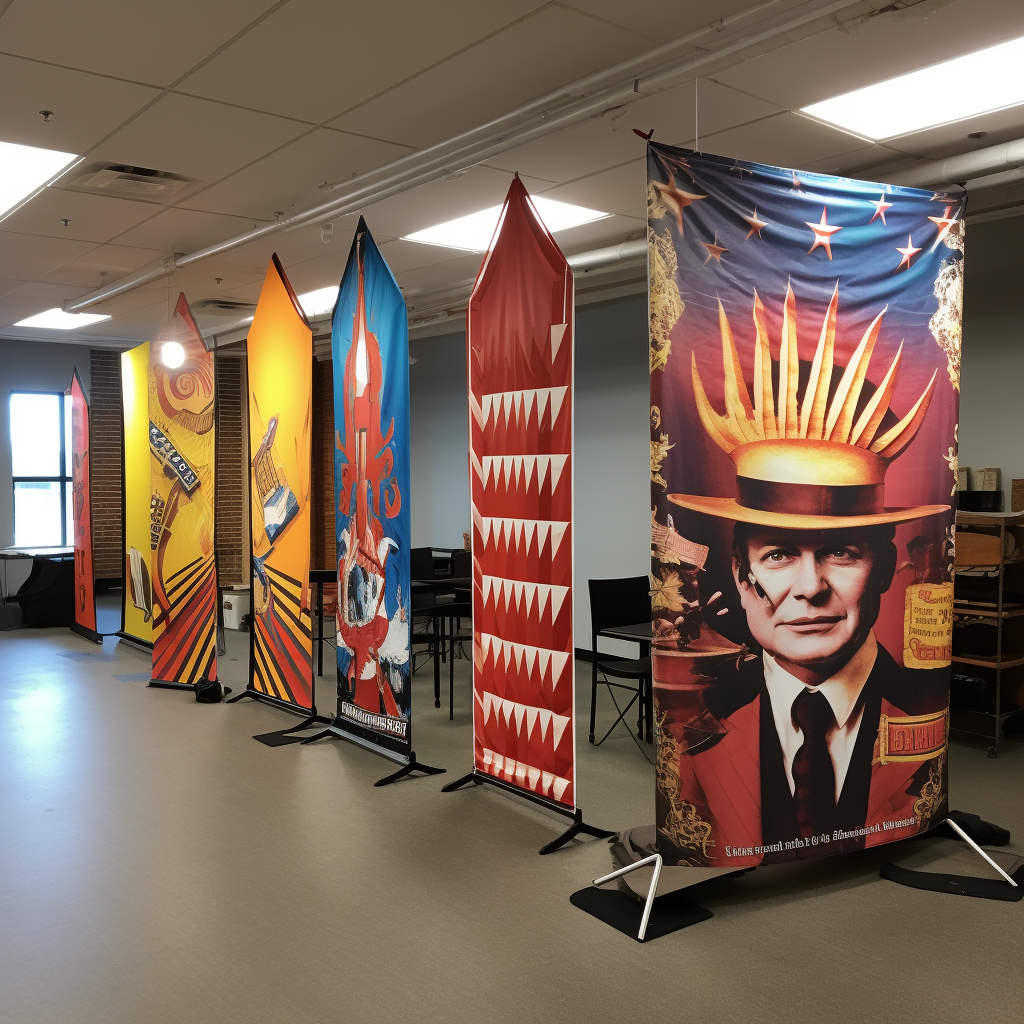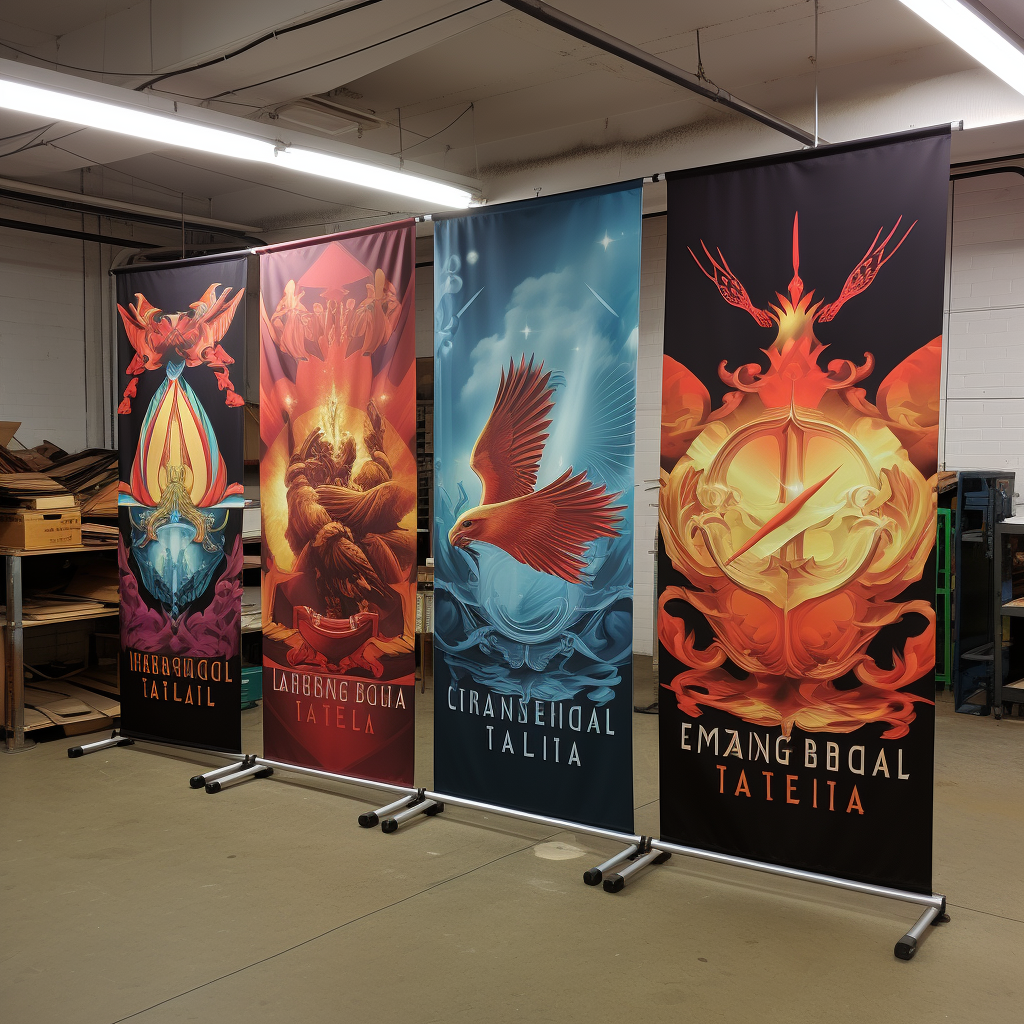
Welcome to the world of retail marketing, where the visual appeal of your store can make or break the customer experience. In this detailed exploration, we delve into the retail banner meaning, a tool of paramount importance in the arsenal of every savvy retailer. Retail banners are not just decorative pieces; they are strategic instruments that serve as silent salespeople, drawing the eyes of potential customers and communicating your brand’s message effectively.
As we unveil the layers of their significance, we’ll discover how these banners stand out in a competitive marketplace, their role in enhancing brand recognition, and their potent ability to influence consumer behavior. Whether it’s a bustling shopping mall or a quaint street corner, the right banner can significantly increase foot traffic and ultimately, sales. So, let’s embark on this journey to understand how to harness the full potential of retail banners for your business.
Ready to elevate your event marketing with striking retail banners that capture attention and drive sales? Send a message to info@zodiacdisplays.com to amplify your event marketing, or visit Zodiac Event Displays to explore our innovative solutions.
The Strategic Role of Retail Banners in Marketing

Retail banners play a strategic role in marketing campaigns by serving as a visual touchpoint for consumers. In the bustling retail environment, these banners are a retailer’s first line of offense in the battle for consumer attention. They offer a snapshot of brand identity and act as a beacon for product promotions and store events. Banners can be strategically placed to guide consumer traffic flow, making them a vital part of in-store navigation and layout planning.
Furthermore, retail banners are a flexible medium, accommodating seasonal campaigns and limited-time offers with ease. This adaptability ensures that retailers can stay current and relevant, enticing customers with fresh and timely content. By leveraging the power of imagery, color, and text, banners create an emotional connection with shoppers, influencing their perception and encouraging them to make a purchase decision.
When designed effectively, retail banners can also reinforce brand consistency across different platforms, from physical storefronts to online marketplaces. This consistency is crucial for building a strong, recognizable brand that customers can trust. In summary, the purposeful use of retail banners can significantly enhance marketing efforts, contributing to a cohesive and compelling brand narrative that resonates with consumers.
Types and Formats of Retail Banners Explained

Diving deeper into the retail banner meaning, it’s crucial to understand the various types and formats that cater to different marketing needs. Pop-up banners, for instance, are a go-to for high-impact visuals and can be easily transported and set up for temporary promotions or events. They’re often used at entrances or high-traffic areas to catch the eye of passersby.
Flag banners are another popular choice, designed to flutter and wave, generating movement that naturally draws attention. These are perfect for outdoor use, signaling sales or special store sections. Hanging banners, on the other hand, take advantage of vertical space in-store, making them visible from a distance without obstructing foot traffic.
For more permanent or semi-permanent installations, vinyl banners provide durability and can withstand various weather conditions, ideal for both indoor and outdoor settings. Additionally, digital banners offer a dynamic alternative, where content can be updated instantly to keep up with fast-paced retail promotions. Lastly, pull-up banners are a versatile solution for retailers who require a mobile advertising tool that’s quick to deploy and retract.
Each type of retail banner serves a specific purpose, from announcing new product launches to guiding customers towards a sale. Selecting the right banner format is a strategic decision that can drastically affect the visibility and effectiveness of the marketing message conveyed. Retailers must consider factors such as location, intended duration of use, and the target audience when choosing the ideal banner type to support their marketing objectives.
Design Elements That Make Retail Banners Stand Out
To ensure that a retail banner not only conveys the intended message but also captures and retains consumer attention, several design elements must be carefully considered. The use of vibrant colors is fundamental in creating an attractive visual that stands out in a busy retail environment. Colors should be on-brand and chosen to evoke specific emotions or actions from the target audience.
High-resolution imagery is another critical component, as it contributes to the perceived quality of the banner and by extension, the brand. Blurry or pixelated images can damage credibility and deter potential customers. Typography also plays a pivotal role; the choice of fonts should ensure excellent readability while also expressing the brand’s personality. Short, impactful messages utilizing clear and concise language are typically more effective than dense blocks of text that can be overwhelming or easily ignored.
The incorporation of calls to action (CTAs) is essential, guiding customers on what steps to take next, whether it’s visiting a website, taking advantage of a sale, or heading to a specific section of the store. Smart use of whitespace, or negative space, can help to make these CTAs pop, as well as provide a clean and organized appearance to the overall design.
Lastly, consistency across all marketing materials reinforces brand recognition, so ensuring that retail banners align with other promotional content is key. By integrating these design elements effectively, retailers can create compelling banners that not only stand out but also resonate with consumers, driving engagement and ultimately, sales.
Maximizing Visibility with Proper Retail Banner Placement

Maximizing the impact of retail banners involves more than just design; strategic placement is crucial to ensure they are seen by the maximum number of potential customers. High-traffic areas, such as store entrances, near check-out lines, or central aisles, are prime locations for banners because they guarantee visibility to a large volume of shoppers.
Another effective strategy is to place banners at eye level, where they are more likely to be read and engaged with. This can be particularly impactful in window displays, where banners can entice passersby to enter the store. Moreover, considering the sightlines from various points within and outside the store can help in placing banners in such a way that they are unobstructed and easily viewable from multiple angles.
Seasonal displays and promotional areas are also excellent opportunities for banner placement. When products are on special or new items are being featured, accompanying banners can draw attention and provide immediate context, encouraging impulse buys. Outdoor placement is another factor to consider; banners can be placed near roadways or sidewalks to attract the attention of those passing by, potentially drawing in customers who might not have planned to visit the store originally.
Lastly, it’s important to regularly rotate and update banner placements to maintain customer interest and highlight different promotions or seasonal offerings. This keeps the retail environment dynamic and engaging, encouraging repeat visits. Through thoughtful placement, retailers can significantly enhance the effectiveness of their banners, ensuring that their messages are not just seen, but also acted upon.
Evaluating the Impact of Retail Banners on Consumer Behavior

Understanding the retail banner meaning extends to evaluating how these visual tools influence consumer behavior. Retail banners are not just decorative elements; they are powerful psychological triggers that can subtly guide a shopper’s journey within a store. The impact of well-crafted banners on consumer behavior is multifaceted, affecting both the cognitive and emotional responses of potential buyers.
From a cognitive standpoint, banners serve as informational signposts, directing customers to discounts, new products, or special events. This direct communication can alter shopping patterns, leading customers to explore areas of the store they may have otherwise overlooked. On an emotional level, banners with compelling graphics and persuasive messaging can create a sense of urgency or excitement around a product, encouraging on-the-spot decision-making and increasing the likelihood of impulse purchases.
Measuring the impact of retail banners can be done through various methods, including sales data analysis, customer flow tracking, and direct feedback. By correlating banner campaigns with sales figures or foot traffic patterns, retailers can gain insights into their effectiveness. Additionally, customer surveys and feedback can provide qualitative data on how banners are perceived and their influence on the shopping experience.
To truly harness the potential of retail banners in shaping consumer behavior, partnering with an experienced branding agency like Zodiac Event Displays can make a significant difference. Send a message to info@zodiacdisplays.com to amplify your event marketing and ensure that your banners not only catch the eye but also speak directly to the hearts and minds of your customers.









